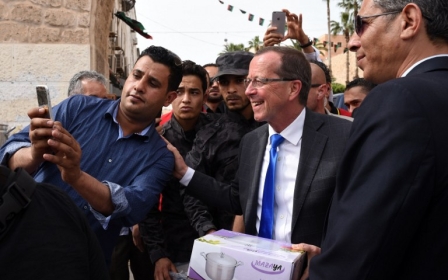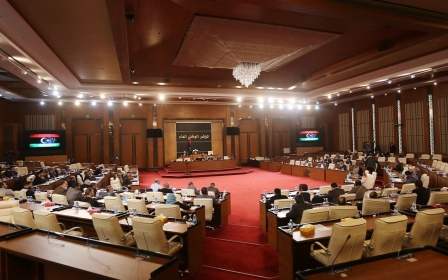Libyan militias trading high-powered weapons through online websites

Facebook has said it will take action to stop weapons sales on its platforms, after a report showed that Libyan militias were trading missiles, RPGs and powerful rifles on social media.
The Small Arms Survey, published this week, shows that hundreds of weapons believed to have been looted from supplies left behind by former leader Muammar Gaddafi had been sold online.
One of the assault rifles cited in the study was traced back to a shipment bought by the UAE's army in 2006 which then found its way to North Africa, the report's authors told Middle East Eye.
Facebook was not named in the report but said it would "remove any such content as soon as we become aware of it ... We encourage people to use the reporting links found across our site so that our team of experts can review content swiftly.”
The website formally banned all unlicensed weapons sales in January.
The report said that the online sales were helping to fuel conflict not only in Libya but also the wider region.
The survey collected data between November 2014 and 2015 which showed anti-tank missiles, man-portable air defence (MANPAD) systems, grenade launchers and powerful "anti-materiel" rifles being sold online.
The vast majority of weapons cited were Cold War-era systems from the former Soviet bloc and Balkans, most likely looted from old Gaddafi-era stockpiles.
However, Nic Jenzen-Jones, the director of Armament Research Services (ARES) which contributed to the report, told MEE that one of the weapons was a Bulgarian-made AR-M9F Kalashnikov variant, which the Bulgarian government said was shipped to the UAE in 2006.
That discovery raises the possibility that arms are being diverted from third-party states to fuel conflict in Libya.
ARES spotted AR-M9Fs in the possession of the Zintan-based Sawaiq Brigade in photos released on its Facebook page in 2013.
According to a UN report released last month, the UAE has provided military support to Zintan-based groups including Sawaiq.
Chinese and European weapons were also found on the online "bazaars," according to the Small Arms Survey.
Berlin-based independent researcher Nizar Sarie al-Din, who has covered Libya since early 2011, told MEE that militias in Libya had turned arms trading into a business.
“Smuggling ... started with the revolution, and I think it became a business for a lot of militias. They made a lot of money out of smuggling,” he said.
“It is reasonable to conclude that the online illicit weapons marketplace is growing in terms of both demand and supply,” the report said.
"Although most of the light weapons studied were of the pre-1992 era, several more-recently acquired weapons were offered for sale.
It cited a "9M111M Faktoriya", a Soviet-era wire-guided anti-tank missile, and a similar European-made Milan F3 as proof that "sophisticated weaponry is available to those with the means and desire to acquire it".
"Similarly, the presence of MANPADS in the markets (including complete systems, missiles, and gripstock units) indicates that fears of the proliferation of these types of weapons systems both in Libya and from Libya to elsewhere in the region continue to be well founded.
"Advanced study is needed to identify the sources of arms outside state control and help curb the further proliferation of small arms and light weapons in Libya and the wider region," the organisation added.
Middle East Eye propose une couverture et une analyse indépendantes et incomparables du Moyen-Orient, de l’Afrique du Nord et d’autres régions du monde. Pour en savoir plus sur la reprise de ce contenu et les frais qui s’appliquent, veuillez remplir ce formulaire [en anglais]. Pour en savoir plus sur MEE, cliquez ici [en anglais].




